
Summer research experience programs expand horizons for students and teachers
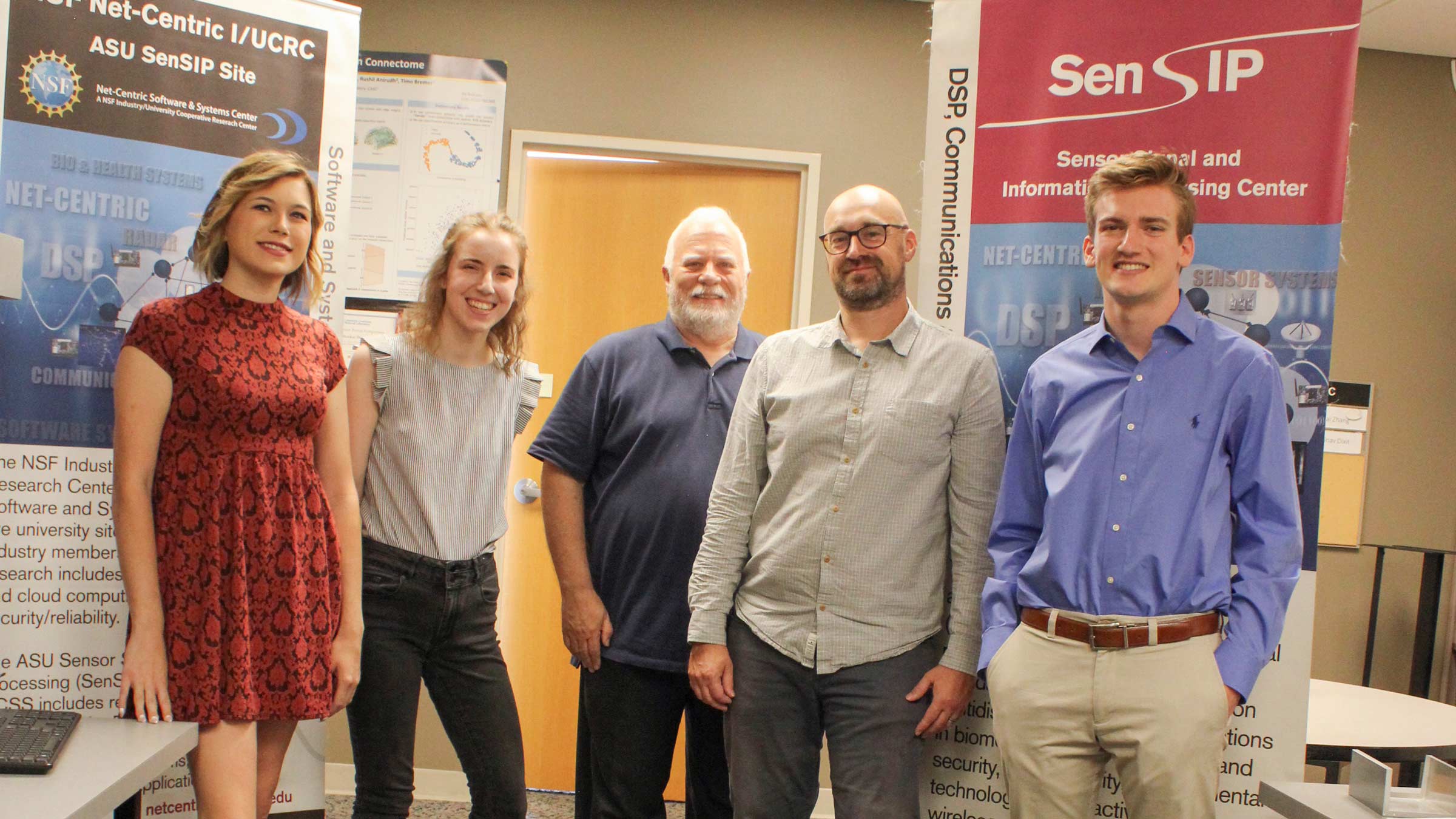
Instead of taking a break from their college studies this past summer, Hwan Kim and Arnav Bawa chose to immerse themselves in areas of engineering, science and technology at the core of their educational and career aspirations.
Kim is preparing to graduate in December from the Ira A. Fulton Schools of Engineering at Arizona State University with a bachelor’s degree in computer science. He says he is likely to pursue a graduate degree in his near future.
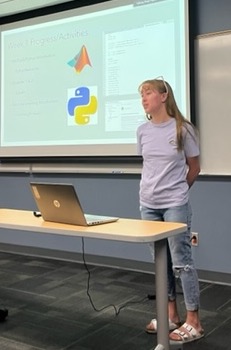
Margie Vollkommer, a biomedical engineering student with a minor in Japanese, explored the use of machine learning for medical image classification in her Research Experience for Undergraduates project this summer. She learned to process imaging data and evaluate machine learning models, as well as the challenges involved in the proper handling of medical images. Photo courtesy of the Sensor Signal and Information Processing Center at ASU
Bawa is on track to earn his bachelor’s degree in electrical engineering in the spring of 2023 and then complete work for a graduate degree in the field by May 2024 through the Fulton Schools accelerated master’s degree program.
But whatever advanced knowledge they acquire from this point on, Kim and Bawa say the nine weeks they spent this summer in the Research Experience for Undergraduates, or REU, program will definitely rank as a high point on their higher education learning curves.
Both participated in an REU in ASU’s Sensor Signal and Information Processing, or SenSIP, center, co-directed by Professor Andreas Spanias and Associate Professor Jennifer Blain Christen, who teach in the School of Electrical, Computer and Energy Engineering, part of the Fulton Schools.
Funded by the National Science Foundation, or NSF, REU programs give undergraduate students opportunities to conduct research under the guidance of engineering and science faculty members who are leaders in their fields, Spanias says. SenSIP began its REU summer program in 2017.
Kim’s research combined neural networks and quantum computing, while Bawa used advanced software to explore a new method of treating tumors using electromagnetic waves.
Working with fellow REU electrical engineering student David McComas and co-advised by Spanias and Glen Uehara, who works in the Quantum Laboratory at General Dynamics, Kim explored a new area of quantum computing.
Kim says through REU he got the challenging but valuable experience of tackling a problem that at first glance seemed insurmountable.
“It gave me more confidence in my abilities to solve hard problems, which is the most important skill in computer science,” he says.
Bawa, mentored by Blain Christen, says his experience developing an entirely intracranial, or inside the skull, tumor treatment was fascinating.
“The project is still in early stages, but I was able to gain meaningful experience by using simulation software and understanding the relationship between computational models and experimental results,” he says.
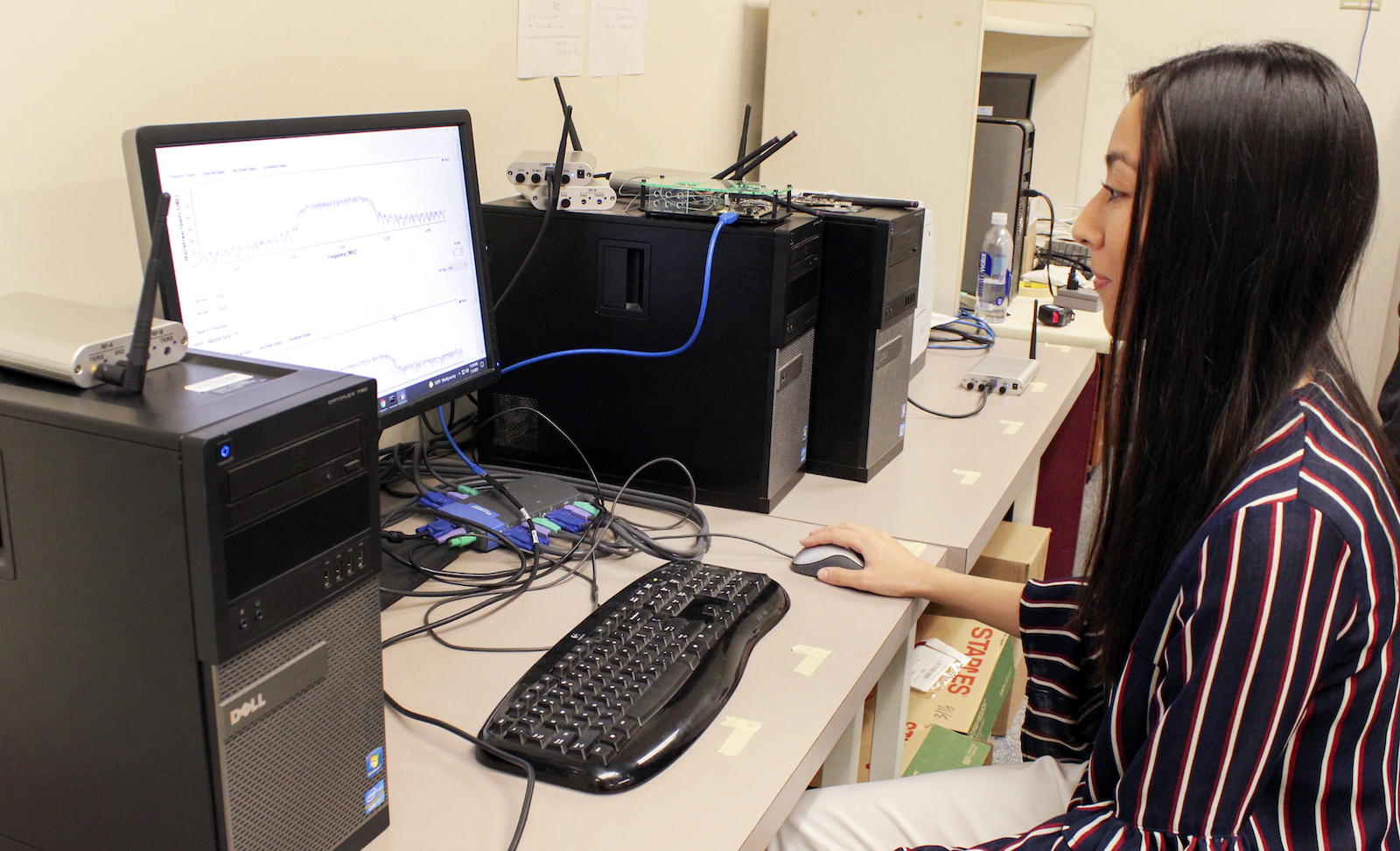
Karla Cosio says her work in the Sensor Signal and Information Processing Center’s Research Experience for Undergraduates program sparked a stronger zeal for learning and discovery that motivated her to pursue a master’s degree in electrical engineering. Photographer: Theresa Cordon/ASU
Putting students in position to succeed
SenSIP, which focuses on research in sensor signal processing, digital signal processing, communications and information networks — essential components of many of today’s most advanced technologies — also provides ASU students the benefits of its own numerous connections to experienced researchers and high-tech industries.
Along with support from the NSF, sponsors of SenSIP’s research include General Dynamics, onsemi, Qualcomm, Raytheon Technologies, and Samsung. SenSIP has also obtained funding from the U.S. Department of Defense Small Business Innovation Research program, as well as the PSG, Alphacore and Lightsense companies.
Karla Cosio, a recent electrical engineering graduate who was selected as an Impact Award winner for her positive influence on the Fulton Schools community, is among many ASU students who’ve said their education has been meaningfully enhanced through involvement with SenSIP’s REU program.
In addition to getting experience with advanced science and engineering tools like machine learning technology for wireless communications, Cosio says she gained a lot of knowledge about not only conducting research but also presenting scientific results.
For her REU project, Cosio worked with Fulton Schools Lecturer Ahmed Ewaisha, who specializes in wireless communications.
“It really gave me presentation skills. I did my first research poster and my first elevator pitch on my [SenSIP] research,” Cosio says. “These things made me decide to pursue a master’s degree because I found something that I really have a passion for, and I don’t think I would have found it if I didn’t do the research [with SenSIP].”
Two other recent REU participants, biological sciences student Michael Esposito and electrical engineering Matthew Dobson, won major awards for their work in quantum machine learning.
The kind of progress made by Cosio, Esposito and Dobson exemplifies what Spanias says is one of the SenSIP’s guiding purposes.
“Our mission is not only to get our students ready to join the high-tech workforce but we want to inspire them to get a graduate education and pursue research careers,” Spanias says.

From what he learned in the Research Experience for Teachers program this summer, Dysart Unified School District high school teacher Steven Clemens says he can help his students better understand the connections between biological sciences and some of today’s groundbreaking new technologies like machine learning. Photo courtesy of the Sensor Signal and Information Processing Center at ASU
Expanding awareness of engineering’s value
SenSIP is seeking to make an impact beyond the goals of the REU program for students. The center currently hosts four other NSF workforce development programs in sensors and machine learning, including an International Research Experiences for Students, or IRES, program and a Research Experiences for Teachers, or RET, program, which began in the summer of 2020.

Fulton Schools Associate Research Professor Jean Larson has a leading role coordinating the SenSiP center’s Research Experience for Teachers summer program. Photo courtesy of the Sensor Signal and Image Processing Center
RET’s objective is to give high school and community college teachers further education about engineering and research in the hope that those teachers will help create awareness and foster interest among their young students in engineering and related STEM fields like artificial intelligence and sensors.
Jean Larson, an associate research professor in the School of Sustainable Engineering and the Built Environment, a part of the Fulton Schools, and a program director with the Center for Bio-mediated and Bio-inspired Geotechnics, or CBBG, coordinates with SenSIP’s RET activities.
Larson ensures participating teachers are connected with other RET sites associated with CBBG and evaluates the lesson plans teachers develop based on their research experiences. She also observes the implementation of these lessons at the teachers’ high schools and community colleges.
Larson works closely with Fulton Schools business operations specialist Robina Sayed who does the overall project coordination for both the REU and RET programs.
Nine Arizona high school and community college faculty members participated in SenSIP’s RET program in the summer of 2021. Six teachers participated in this past summer’s program.
Among them was Abdullah Mamun, who currently teaches for the Maricopa Community College District, as well as Grand Canyon University and Benedictine University, which has a satellite campus in Mesa.
He has an electrical and computer engineering background and now teaches computer science, statistics, biostatistics, mathematics, calculus and trigonometry.
Mamun says he tells his students they “will benefit tremendously” by getting some education in engineering and related subjects, no matter their professional goals. He also recommends SenSIP’s RET program to fellow college teachers.
“It is a good way for teachers to learn what is coming up in AI, and you can integrate that into your classroom instruction, which is really good for your students.”
In other projects, teachers Ebubekir Sen from the Sonoran Science Academy in Tucson and Sharon Stefan from Estrella Mountain Community College in Avondale, Arizona, worked on imaging projects with mentors David Ramirez from General Dynamics and Rosemary Renaut, a professor in ASU’s School of Mathematics and Statistical Sciences.
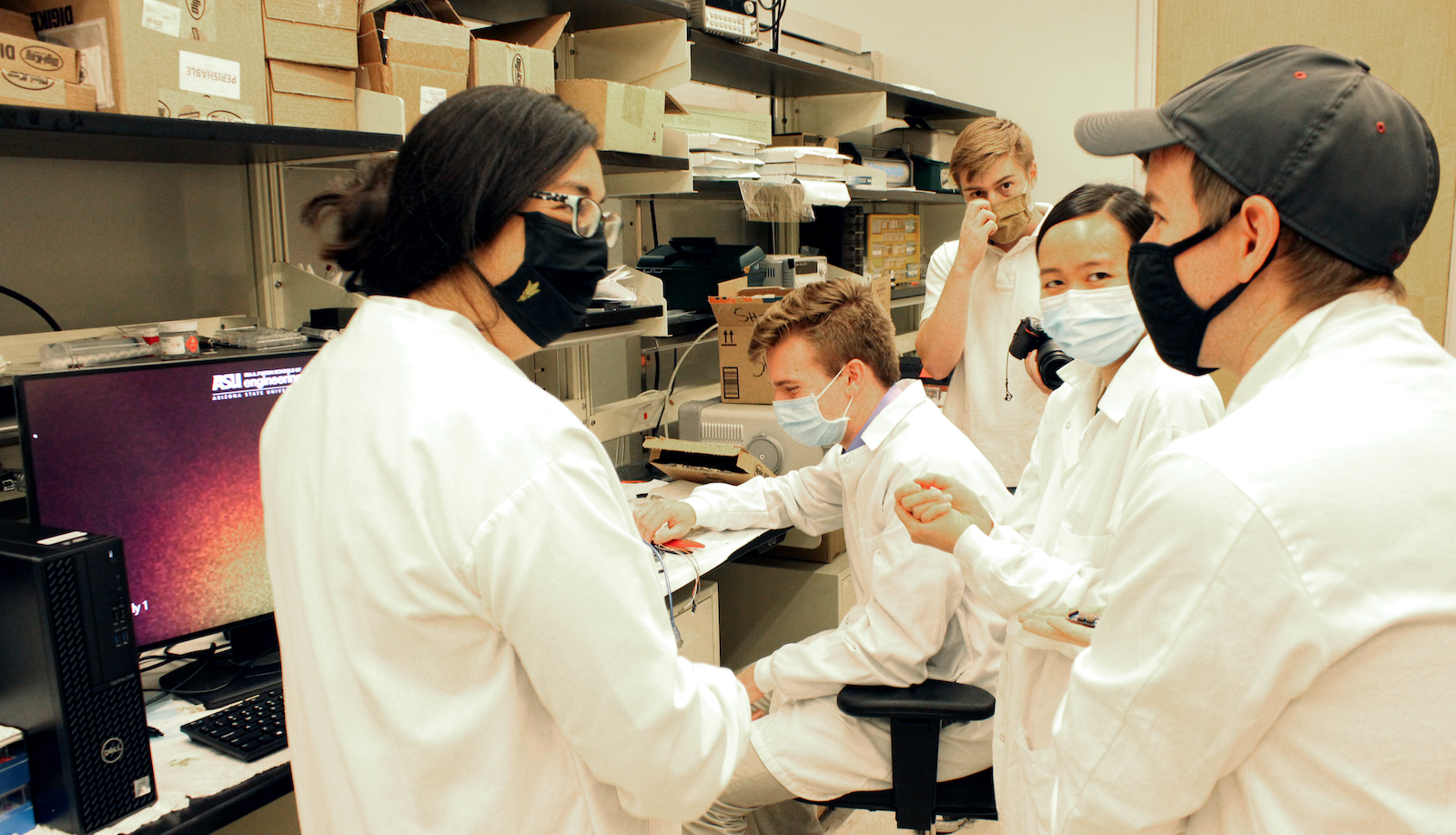
Fulton Schools Associate Professor Jennifer Blain Christen (at left) is pictured with students in the Research Experience for Undergraduates program offered by the Sensor Signal and Information Processing Center, or SenSIP, which she co-directs. She also is director of the BioElectrical Systems and Technology research group at Arizona State University and often brings knowledge gained through the group’s work into her guidance of students and teachers in SenSIP’s research experience programs. (The photo was taken during the early days of COVID-19 pandemic) Photographer: Theresa Cordon/ASU
Outreach endeavors open career paths
ASU alumnus Steven Clemens participated in his third RET program this summer. He teaches biological sciences for the Dysart Unified School District northwest of Phoenix, as well as an integrated science course at Valley Vista High School.
In 2016, Clemens participated in the first RET program offered by ASU’s CBBG research center, directed by Fulton Schools Regents Professor Edward Kavazanjian, then returned in 2017 as the teacher mentor for the center’s RET program.
Clemens says he chose to also take part in the SenSIP RET program because he wanted to learn something new and bring the benefit of that experience to his students.
“I learned how machine learning is changing the world,” Clemens says. “From smart speakers and cell phones to medical devices and algorithms, the world is constantly changing and the people who make these programs and devices are in high demand.”
“I was out of my comfort zone leaving the world of biological sciences but did find a way to connect my strong biological science background with machine learning programs,” he says.
“While I did not create anything major or groundbreaking, my goal of bringing the two fields together was accomplished. My overall goal was to find a way to teach students that working together in a research center is how advancement gets accomplished in the scientific community,” Clemens says. “My hope is to help open their eyes to a new career path they might not have thought of before because they were too scared to try something new.”
Exploring new tools, methods and materials
Karl Ernsberger, who teaches science at Lumos Arts Academy in Mesa, says he is currently studying data science, which is what brought him to SenSIP’s RET program.
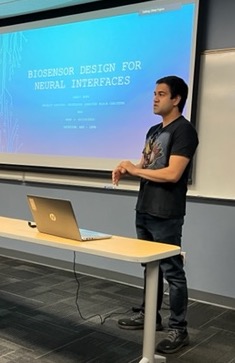
Electrical engineering student Arnav Bawa’s work in the Research Experience for Undergraduates program helped make progress on a project to develop a novel treatment for tumors. The effort provided him valuable experience in the use of simulation software and computer modeling. Photo courtesy of the Sensor Signal and Information Processing Center at ASU
“My experience in the RET program was fantastic. It was fast paced and included experts from multiple fields, both as mentors and as peers in the program,” Ernsberger says. “Getting access and training on materials at the ASU campus and working to accomplish a high goal in an actual ongoing project was inspiring. The support from all those resources was the most valuable thing about the program.”
For his RET project, Ernsberger evaluated an array of sensors for a project to develop a new method of detecting chemical substances. His part of the project involved setting up experimentation to test the original set of sensors in a lab setting.
Through his research, Ernsberger learned that machine learning could simplify and reduce the price of the sensor suite design — if the doctors requesting the design agree with the findings.
“I greatly enjoyed the program and have several new tools to take with me to the classroom because of it,” he adds, “and I am very excited to get involved in another round of research next summer.”
Mentored by Blain Christen, Ernsberger worked with Raquel Diaz, a math teacher at Trevor G. Browne High School in Phoenix, who after her experience in the RET program expressed interest in pursuing a doctoral degree.
Spanias, Blain Christen and Larson say recruitment for the programs in the past few years has been outstanding, drawing not only well qualified participants but also groups that reflected diversity, including in 2021 when half of the participants were women.
Research becomes communal experience
Blain Christen has been involved in various REU programs for more than a decade and recently also began working with RET participants. She says outcomes have been promising enough to make a strong argument for expansion of these outreach ventures to help further strengthen ASU’s connections to industries and to high schools and community colleges.
“These programs are showing people the big picture about how better science and engineering can improve the world — how, for instance, a math teacher can contribute something to efforts to save endangered sea turtles,” Blain Christen says.
“If you help teachers be better teachers and help students to be better students, then you create communities of mentors and collaborators who can really accomplish important things.”
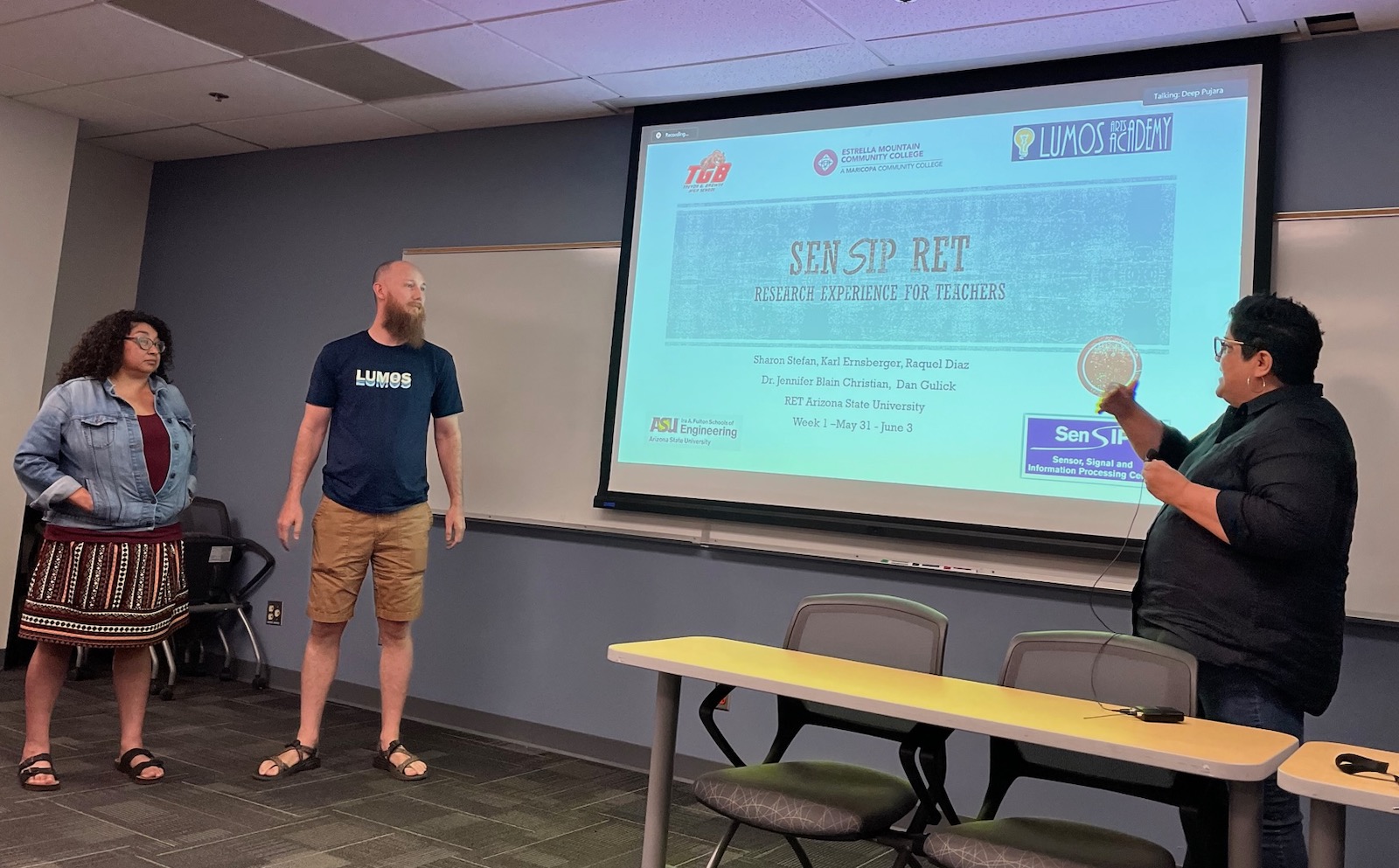
Raquel Diaz, at right, presents a slide presentation describing the introductory training week of the SenSIP Research Experience for Teachers program and the research project selection process for participants. She was joined in the presentation by Karl Ernsberger and Sharon Stefan, at left. Diaz teaches math, algebra, geometry and trigonometry at Trevor G. Browne High School in Phoenix, Ernsberger is a science teacher at Lumos Arts Academy in Mesa and Stefan teaches college mathematics, algebra and calculus for elementary school teachers at Estella Mountain Community College in Avondale. Photo courtesy of the Sensor Signal and Information Processing Center at ASU
Learn more about the REU and RET programs.
Applications for summer 2023 will open in December 2022 and be available on the SenSIP website.
REU program’s expanding reach
Over the years, the SenSIP Research Experience for Undergraduates, or REU, program has drawn students from a growing number of universities and community colleges.
In addition to students from Arizona State University, Arizona participants have come from Cochise Community College, Maricopa Community College, Glendale Community College and Mesa Community College.
Outside of Arizona, students have participated from Indianapolis University, Shepherd University, the University of Illinois, Iowa State University, the University of Maryland, the University of California, Berkeley, and Yale University.
About a third of these students have co-authored IEEE conference papers with their REU mentors. At least four of the 41 students who completed the REU program co-authored patent pre-disclosures with their mentors.



































